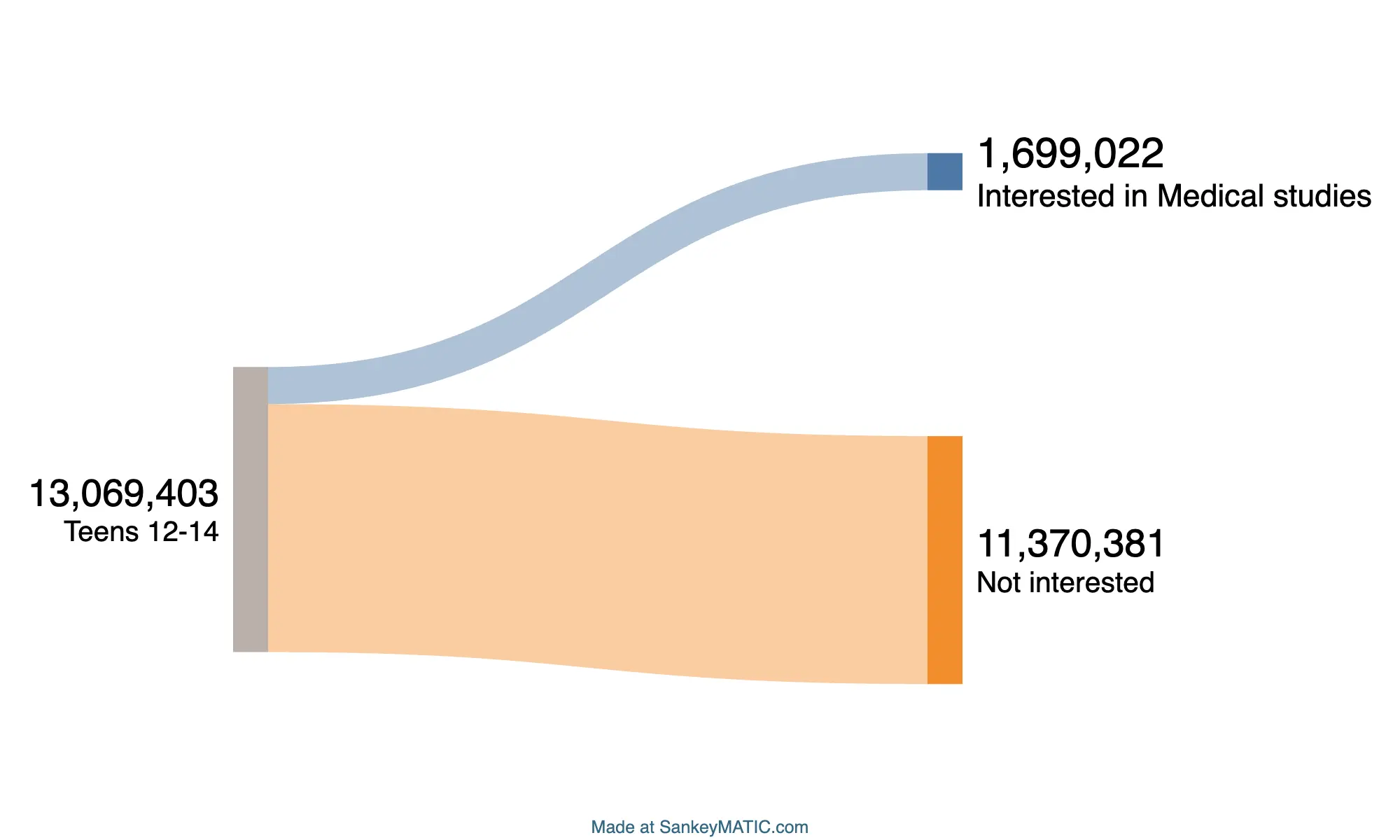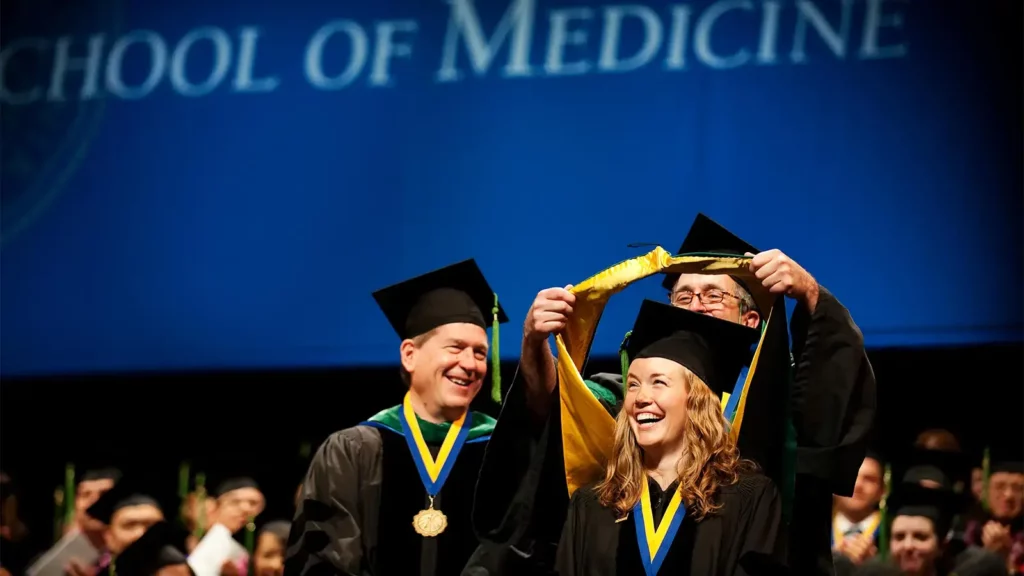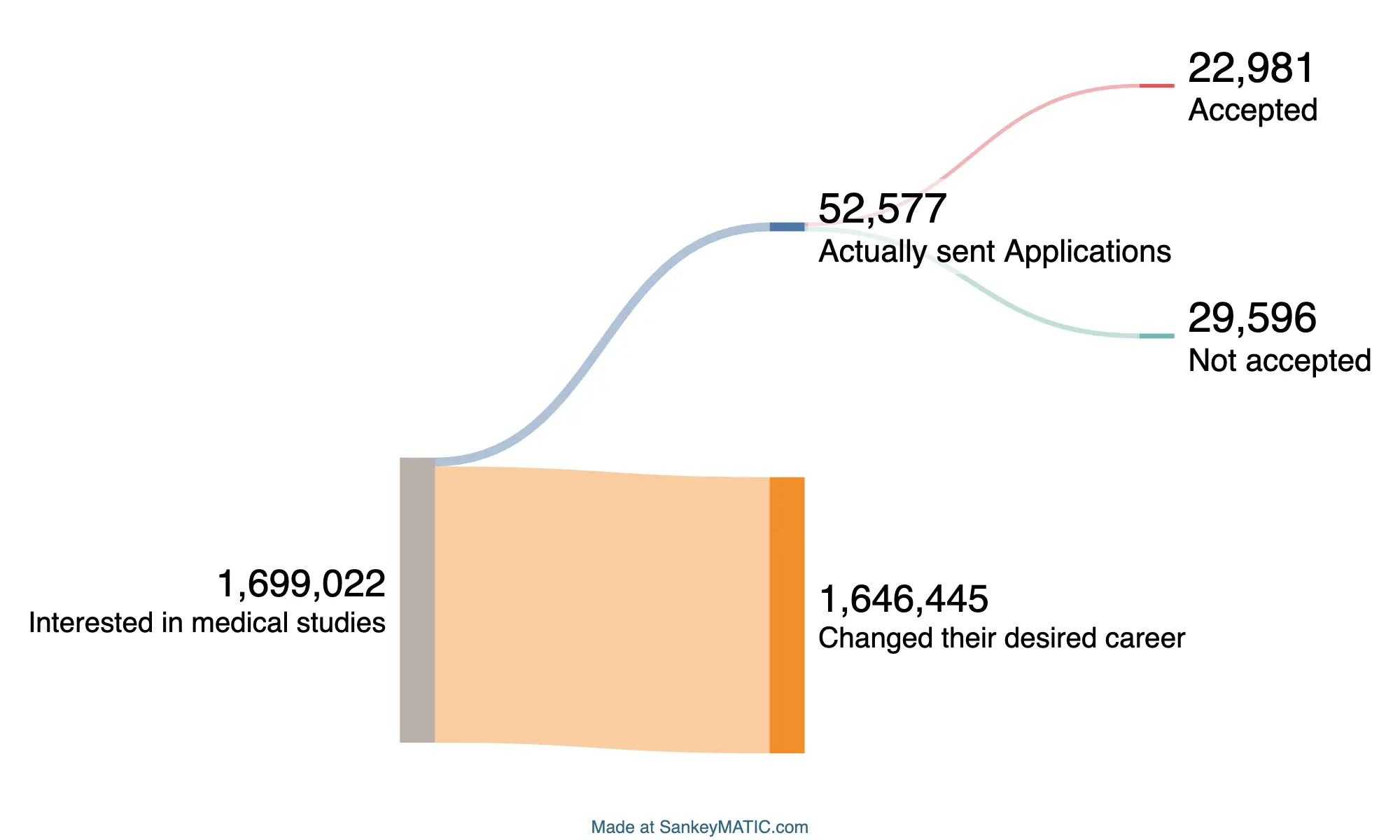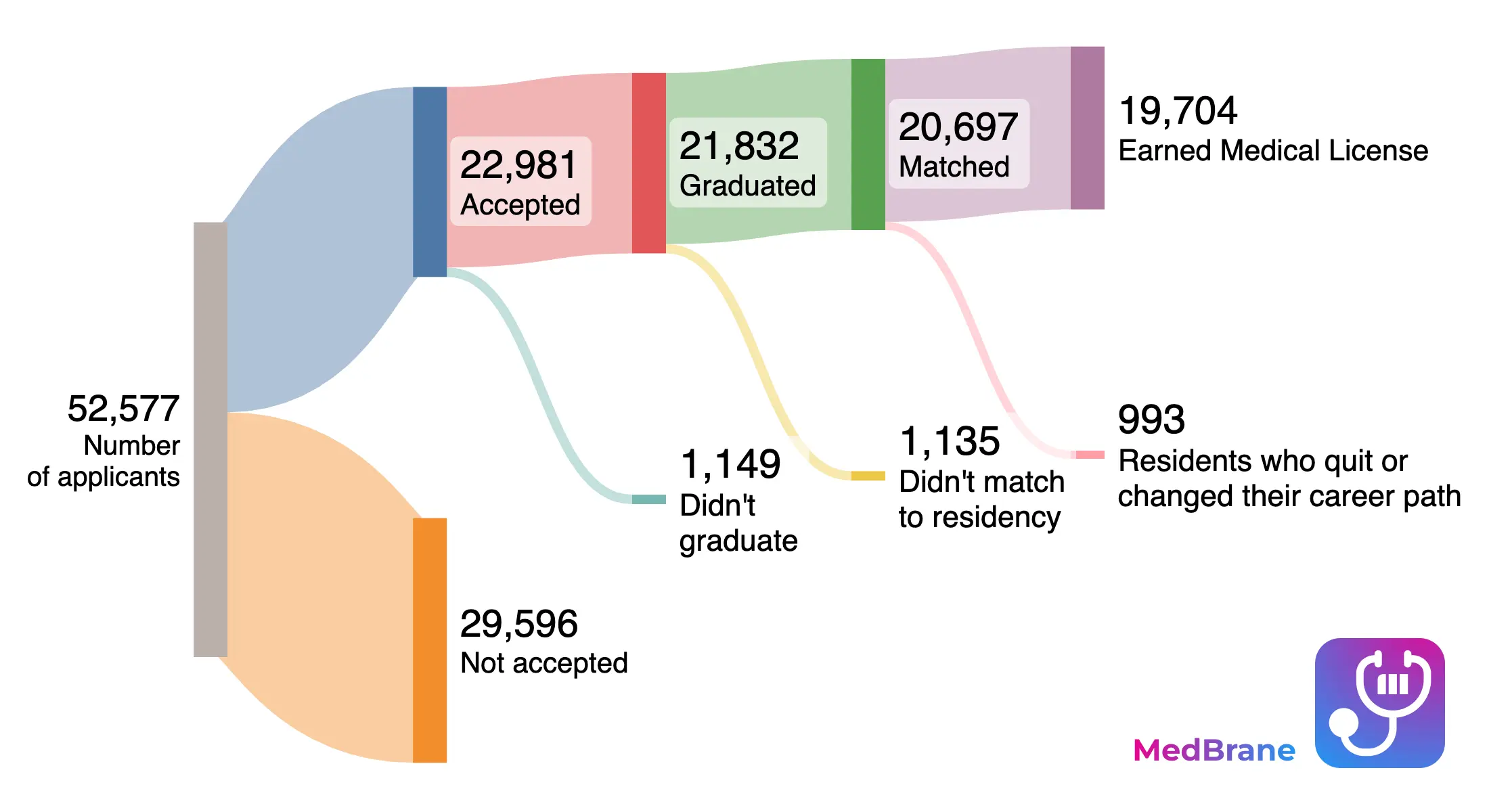Are you planning to study medicine, or are you already on this path, and wondering how many actually see it through to the end? In 2023, around 21,000 individuals graduated from medical schools across the United States.
Whether you’re applying to medical school or about to finish, having a comprehensive understanding of the statistics in this profession and its competitiveness is beneficial. Let’s explore these statistics, from children who aspire to attend medical school to medical residents.
Children and Teenagers Who Aspire to Enroll in Medical School
Becoming a medical doctor is a common aspiration among many children and teenagers, akin to dreams of becoming an astronaut or a scientist.
A survey conducted in 2020 in the UK revealed that 13% of children aged 8 to 13 expressed a desire to become medical doctors. Considering the competitive nature of the medical field in the United States, we can reasonably estimate that this percentage is at least between 13-15%.
In the same year, there were approximately 13,069,403 teenagers aged 12-14 in the U.S. Focusing on this age group, as they are transitioning from children to teenagers with a more developed understanding of this profession, we find that about 13% of them, or 1,699,022, are interested in pursuing a career in medicine.
Let’s visualize this data on a Sankey diagram.

Applications and Enrollments in Medical Schools
If over 1.5 million teens aged 12-14 are interested in medical studies, the number dwindles significantly by the time actual applications are submitted.
Examining AAMC recent statistics on medical school applications and matriculations, in 2023, there were 52,577 applicants. Each applicant, on average, submitted 18 applications, resulting in a total of 966,947 applications.
Of these applicants, 22,981, or 43.7%, were accepted into medical schools in 2023.
Let’s update our Sankey diagram to reflect these figures:
How Many Medical Students Graduate Each Year?
As mentioned at the beginning of this article, around 21,000 students graduated from medical schools in the U.S. in 2023.
This high graduation rate indicates that nearly all students who enroll in medical school eventually graduate. Overall, statistics show that over 95% of students ultimately graduate. Although there is a small dropout rate, the stringent admission criteria of U.S. medical schools ensure that most admitted students graduate.
Statistics on Medical Residents
What about medical residents? Do they match to their desired specialties? What are the most sought-after specialties?
A decade ago, the situation was more challenging. A study from 2015 stated, “By 2014, there were as many as nine applicants for each residency position, with failure to match in the NRMP (National Resident Matching Program) having serious consequences, including the inability to secure any residency position at all.”
Fast forward 10 years, and the outlook for those applying for residency next year is more positive. Despite the high number of applications, 94.8 percent of students surveyed in the study successfully matched to a program in their chosen specialty. Today, most students eventually match to a residency program, marking the beginning of a new journey in their medical careers.
The AAMC provides extensive statistics on medical residents, offering a wealth of information for those interested in delving deeper.
The Road Ahead for Medical Graduates
The journey of a medical student doesn’t end at graduation. After earning their medical degree, graduates often face the challenge of choosing a specialty and finding a residency program that aligns with their interests and career goals. The process can be daunting, with thousands of graduates competing for limited residency slots across various specialties.
Specialties in high demand often have higher competition rates. For instance, surgical specialties, dermatology, and anesthesiology are known for their selectivity. On the other hand, primary care fields like family medicine and pediatrics often have more available positions, which can offer a different set of opportunities and challenges for new doctors.
The geographical distribution of residency positions also plays a n important role. Some areas in the U.S., particularly rural and underserved regions, have a higher demand for medical professionals. Graduates willing to serve in these areas may find more opportunities and potentially more favorable conditions for their residency placements.
Attrition Rates Among Residents
When it comes to how many residents actually complete their residency and earn a medical license, we find that the majority do! According to a study conducted in 2023, the attrition rate is only around 4.8%.
This study also reports higher attrition rates in surgical residency programs (6.7%) compared to non-surgical programs (4.4%). Factors associated with higher attrition rates included gender, race, age at the start of residency, type of residency program, and program location. The study emphasizes the necessity for residency programs to enhance the training environment, particularly for underrepresented minorities and female residents, in order to reduce these rates.
Let’s update our Sankey chart one last time to get the full picture, from admission to medical licensure:
Conclusion
Embarking on a career in medicine is a commendable and rigorous journey. From the aspirations of young teenagers to the challenging road through medical school and into residency, each step is a testament to the dedication and hard work of those who choose this path. The high graduation rates and successful match rates in residencies are encouraging signs of a robust medical education system in the United States.
However, the journey doesn’t stop there. The transition from a medical student to a practicing doctor is filled with decisions and opportunities that shape the kind of physician one will become. This path, while demanding, offers the chance to make a significant impact on individual lives and communities.
As the medical field continues to evolve, so do the opportunities and challenges faced by medical students and graduates. Keeping abreast of these changes and preparing for them is essential for anyone embarking on this noble and fulfilling career path.
Join MedBrane
Enhance your medical studies and connect with a community of peers by exploring MedBrane, an innovative app designed specifically for medical students, offering a wealth of practice exam questions with detailed explanations and a forum for valuable discussions and networking.



Pingback: Financial Planning for Medical Students | MedBrane